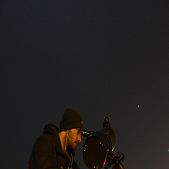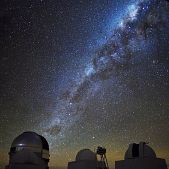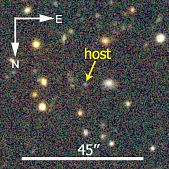
Discovered a rare supernova
Andreas Papadopoulos is a postgraduate student and researcher of the University of Portsmouth who discovered a rare, superluminous supernova that erupted in a galaxy 7.8 billion light years away.
He studied Supernovae Astrophysics and Cosmology. His research focuses on searching and studying Superluminous Supernovae – exploding stars more than 10 billion times brighter than Sun. From June 2012 he has been involved with the Dark Energy Survey as member of the Supernova Working Group.
The stellar explosion, called DES13S2cmm, easily outshines most galaxies in the Universe and could still be seen in the data six months later, at the end of the first of what will be five years of observing by DES.
The Greek researcher presented his discovery at the National Astronomy Meeting 2014 in Portsmouth on Wednesday, on 25 June 2014.
Supernovae are very bright, shining anywhere from one hundred million to a few billion times brighter than the Sun for weeks on end. Thousands of these brilliant stellar deaths have been discovered over the last two decades, and the word ‘supernova’ itself was coined 80 years ago.
But superluminous supernovae are a recent discovery, only being recognized as a distinct class of objects in the past 5 years. These cosmic explosions are 10-50 times brighter at their peak than the brightest normal type of supernovae and, unlike other supernovae, their explosive origins remain a mystery.
«Fewer than forty such supernovae have ever been found and I never expected to find one in the first DES images! As they are rare, each new discovery brings the potential for greater understanding – or more surprises» said Papadopoulos.
It turns out that even within this select group, DES13S2cmm is unusual. The rate that it is fading away over time is much slower than for most other superluminous supernovae that have been observed to date. This change in brightness over time, or “light curve”, gives information on the mechanisms that caused the explosion and the composition of the material ejected.













